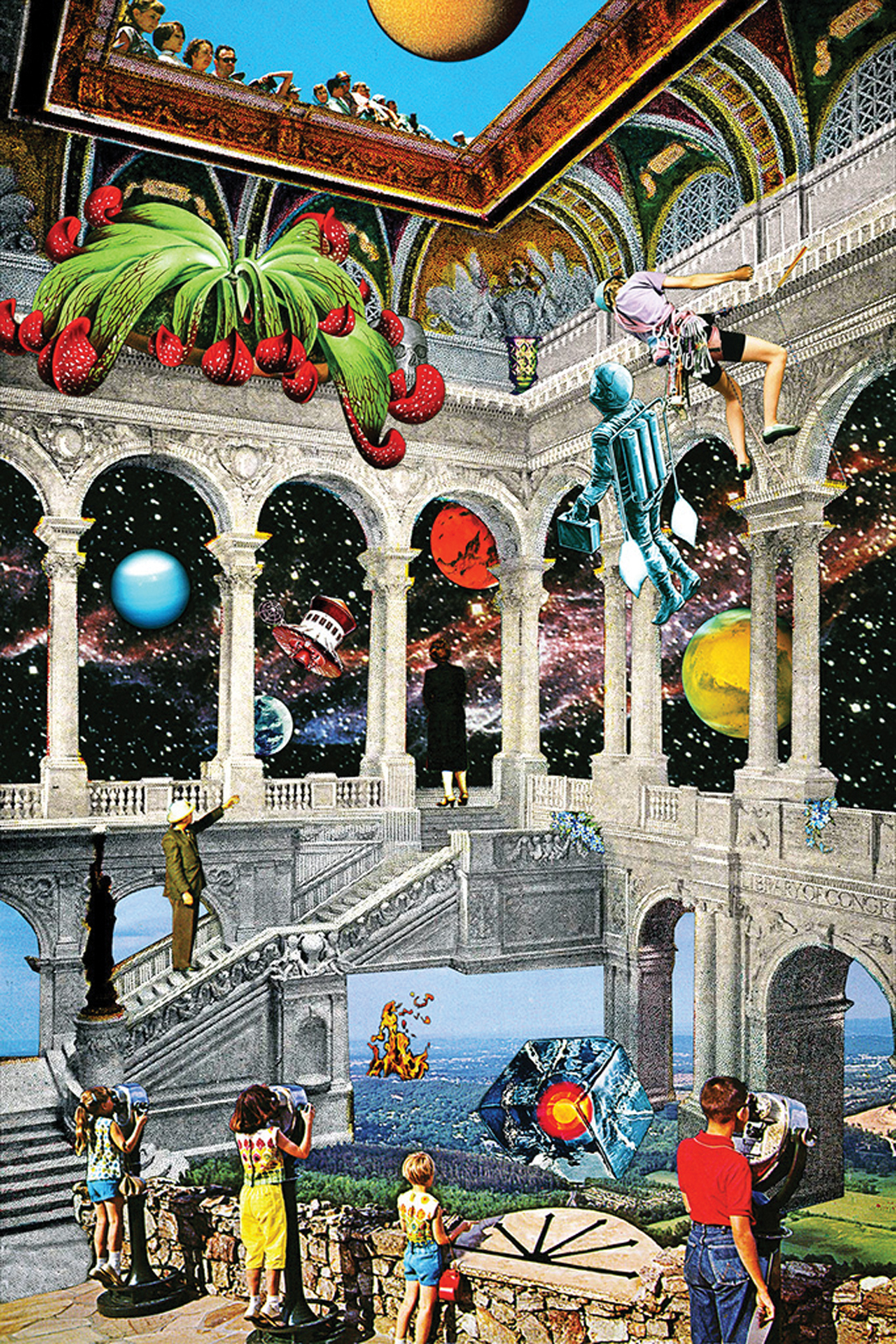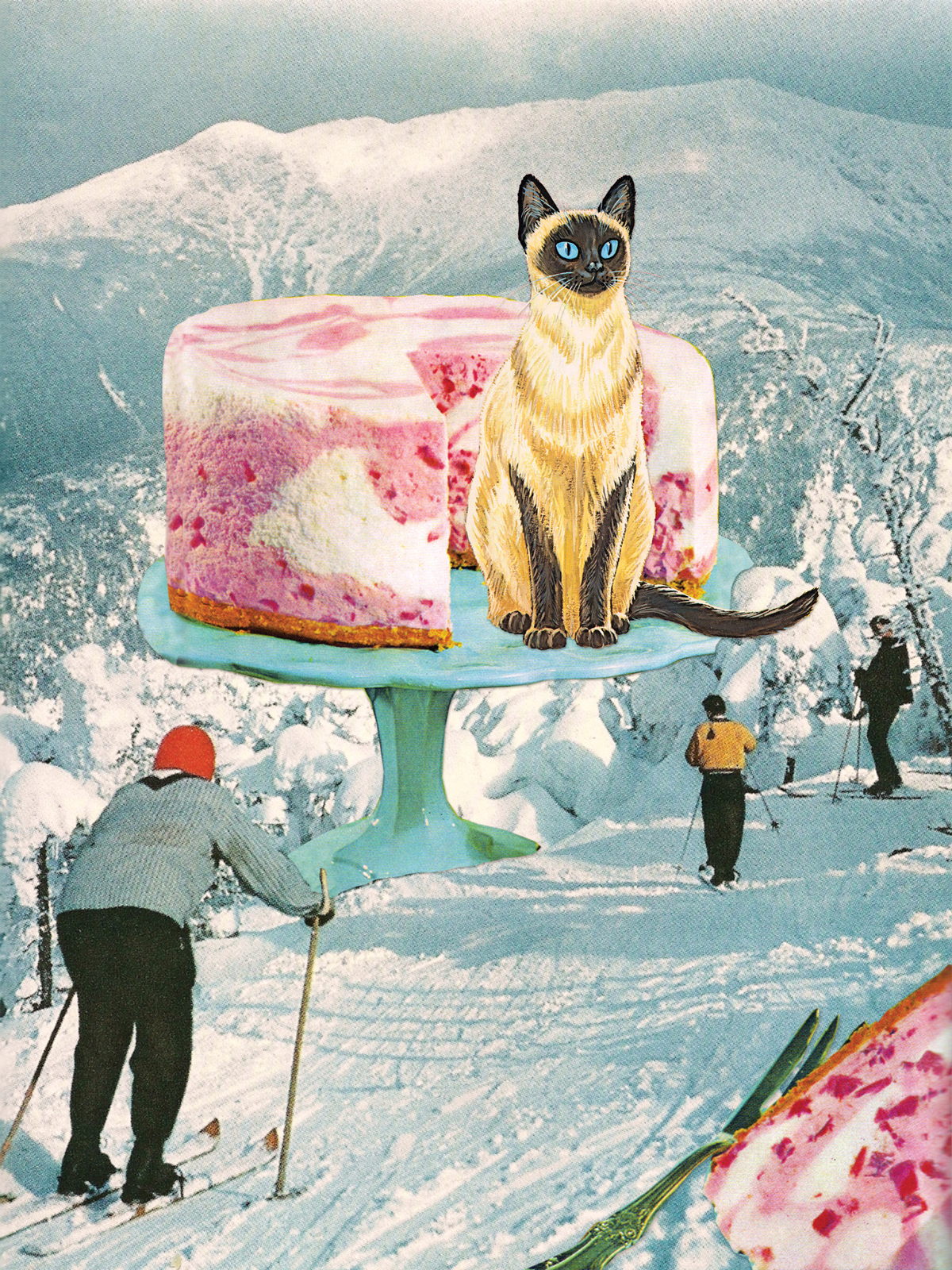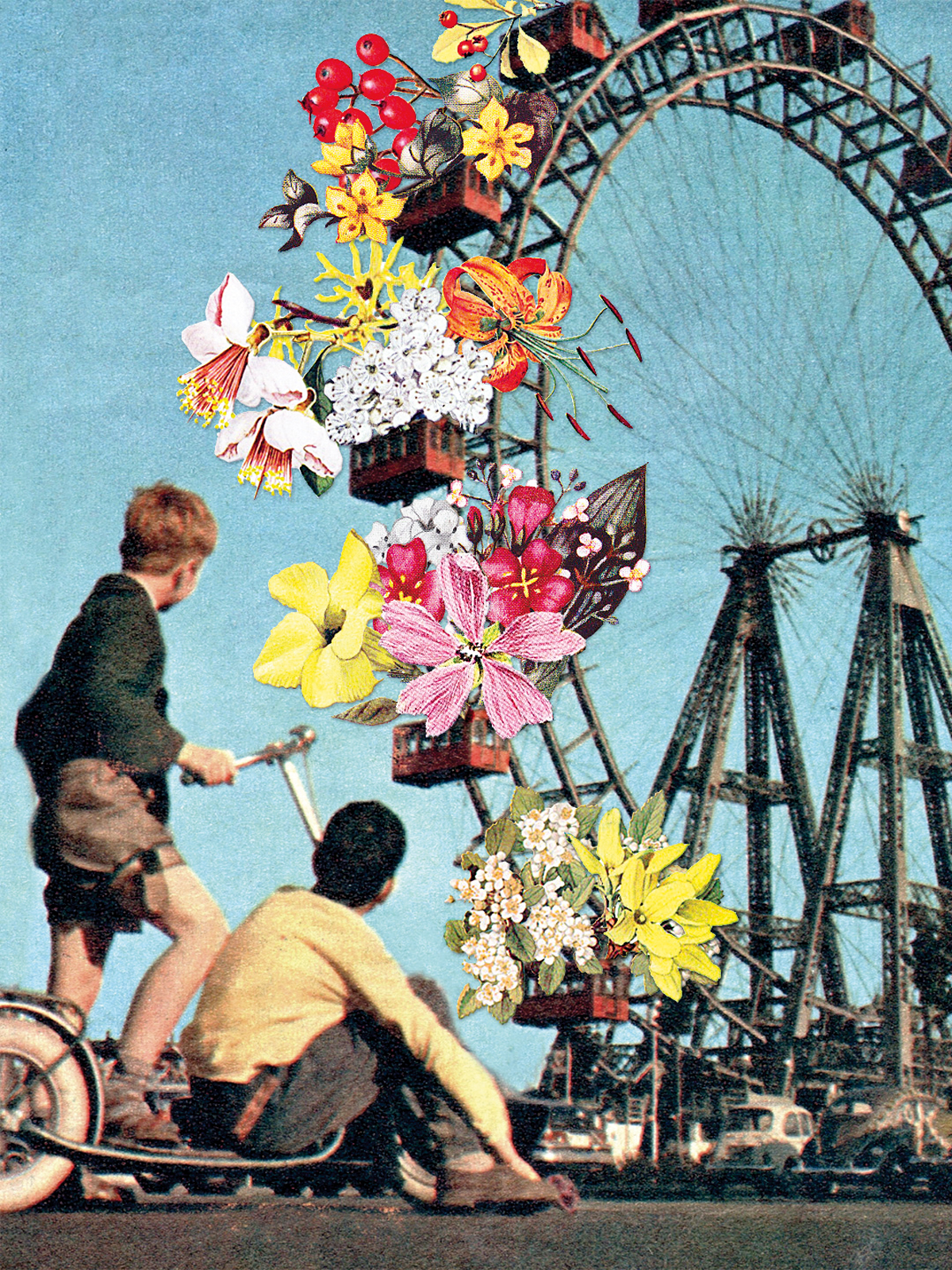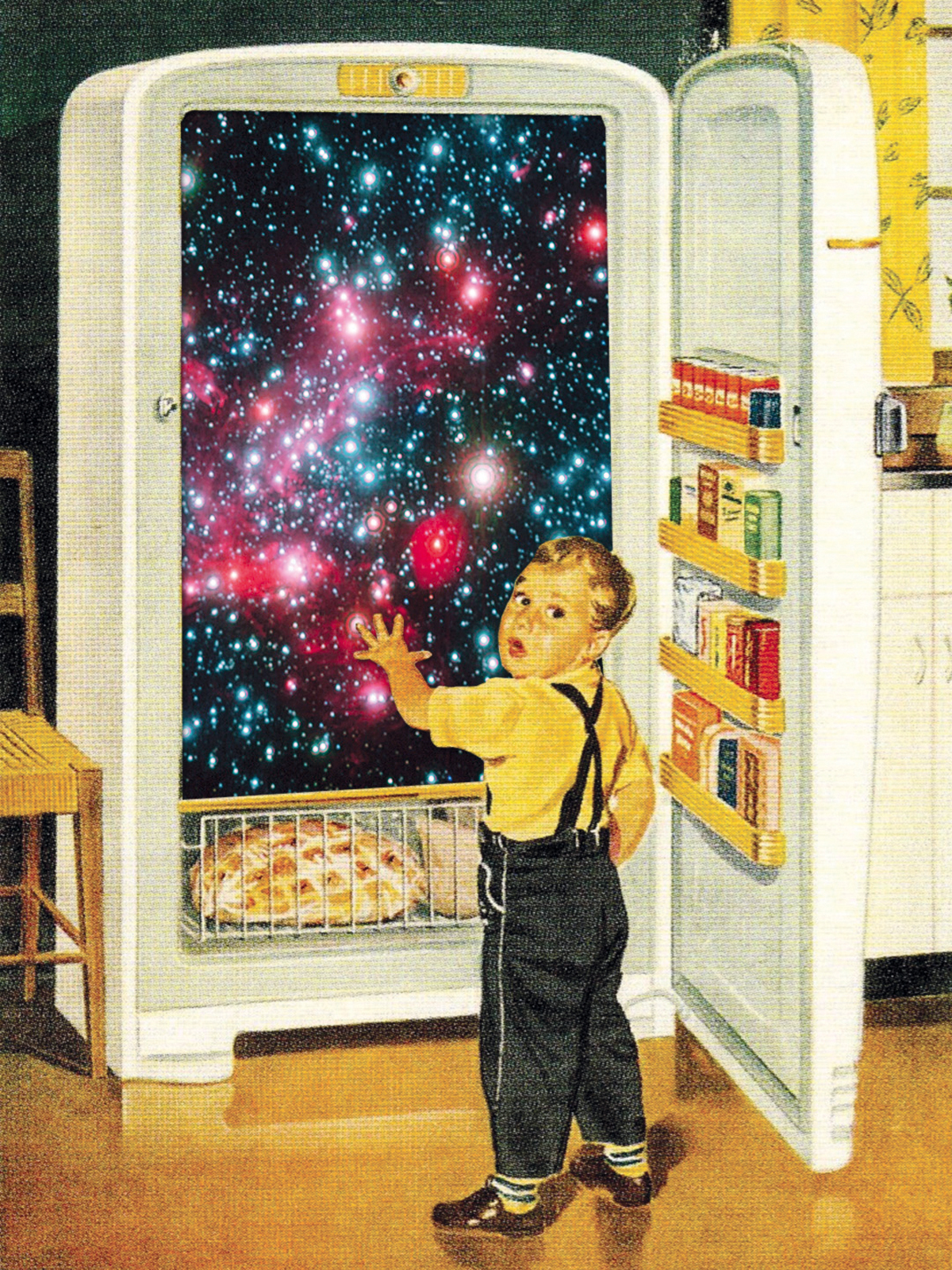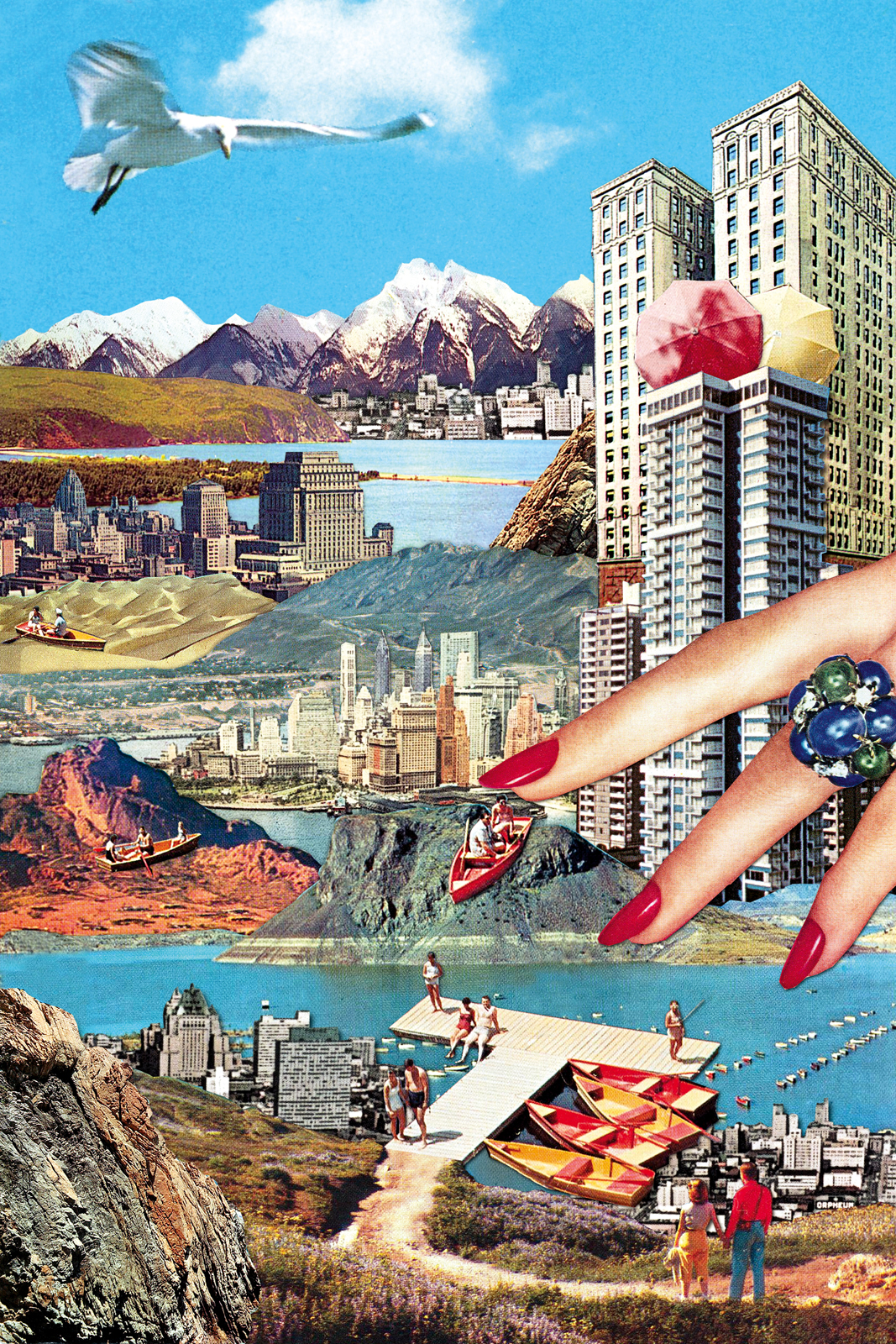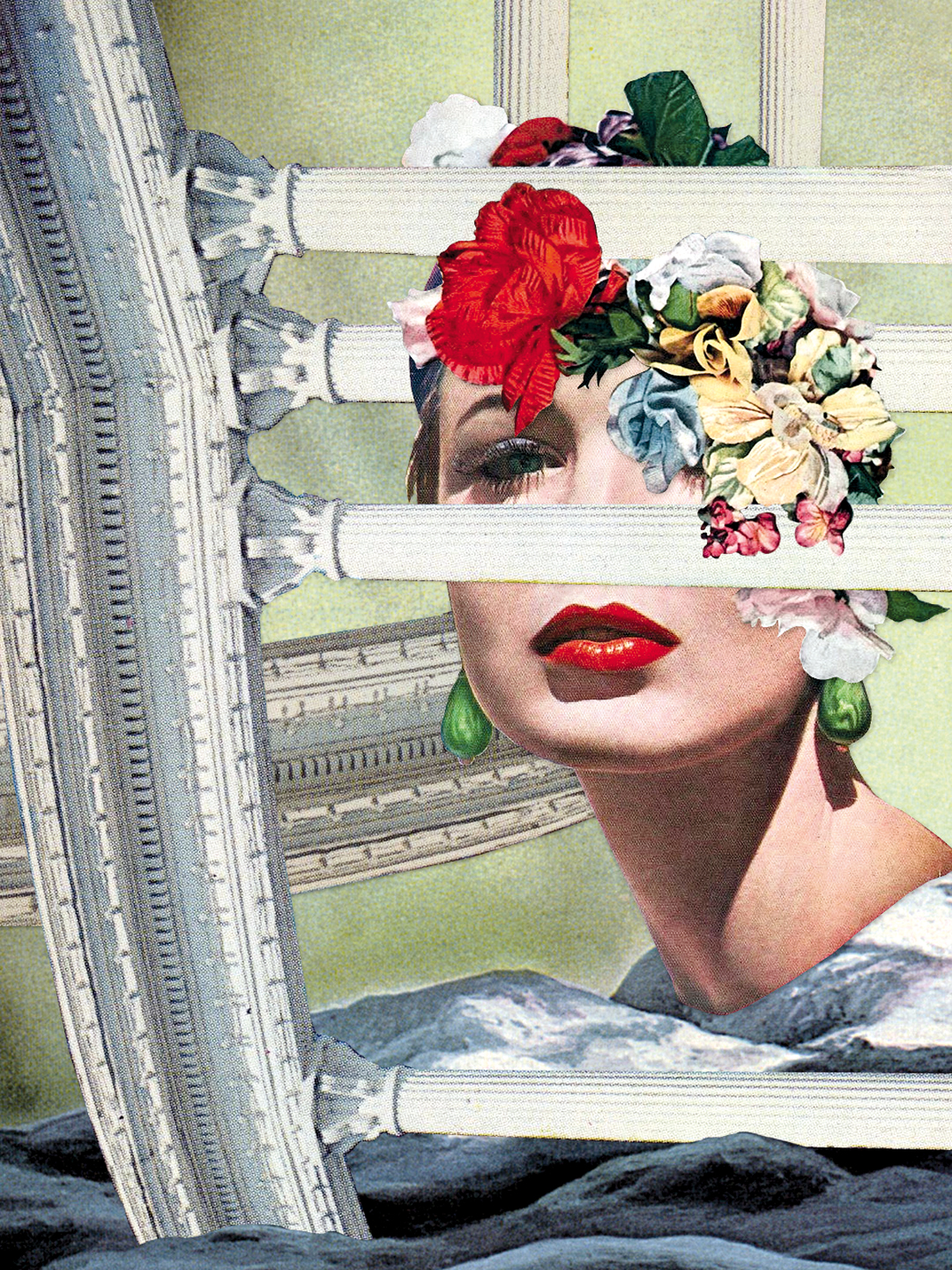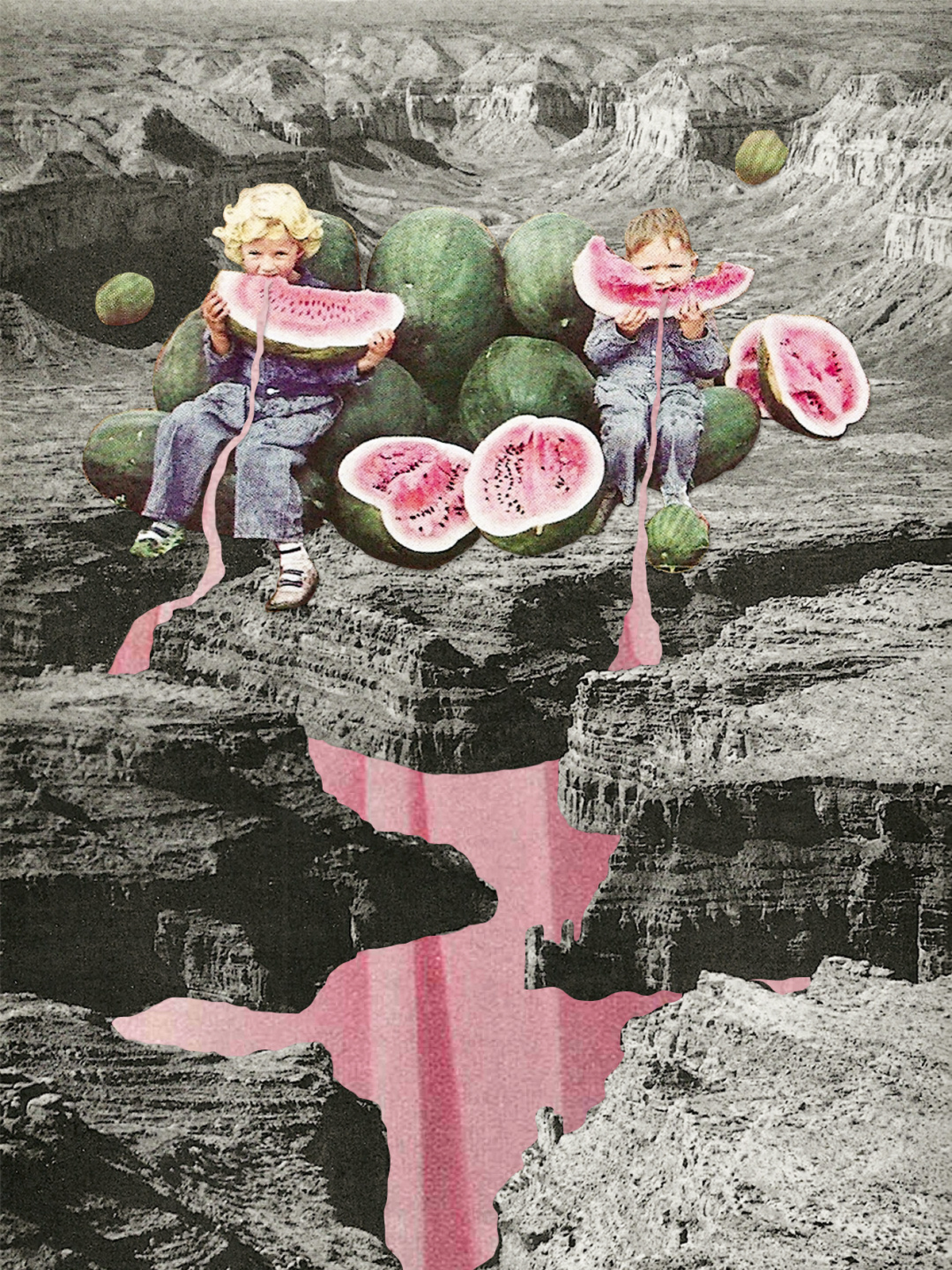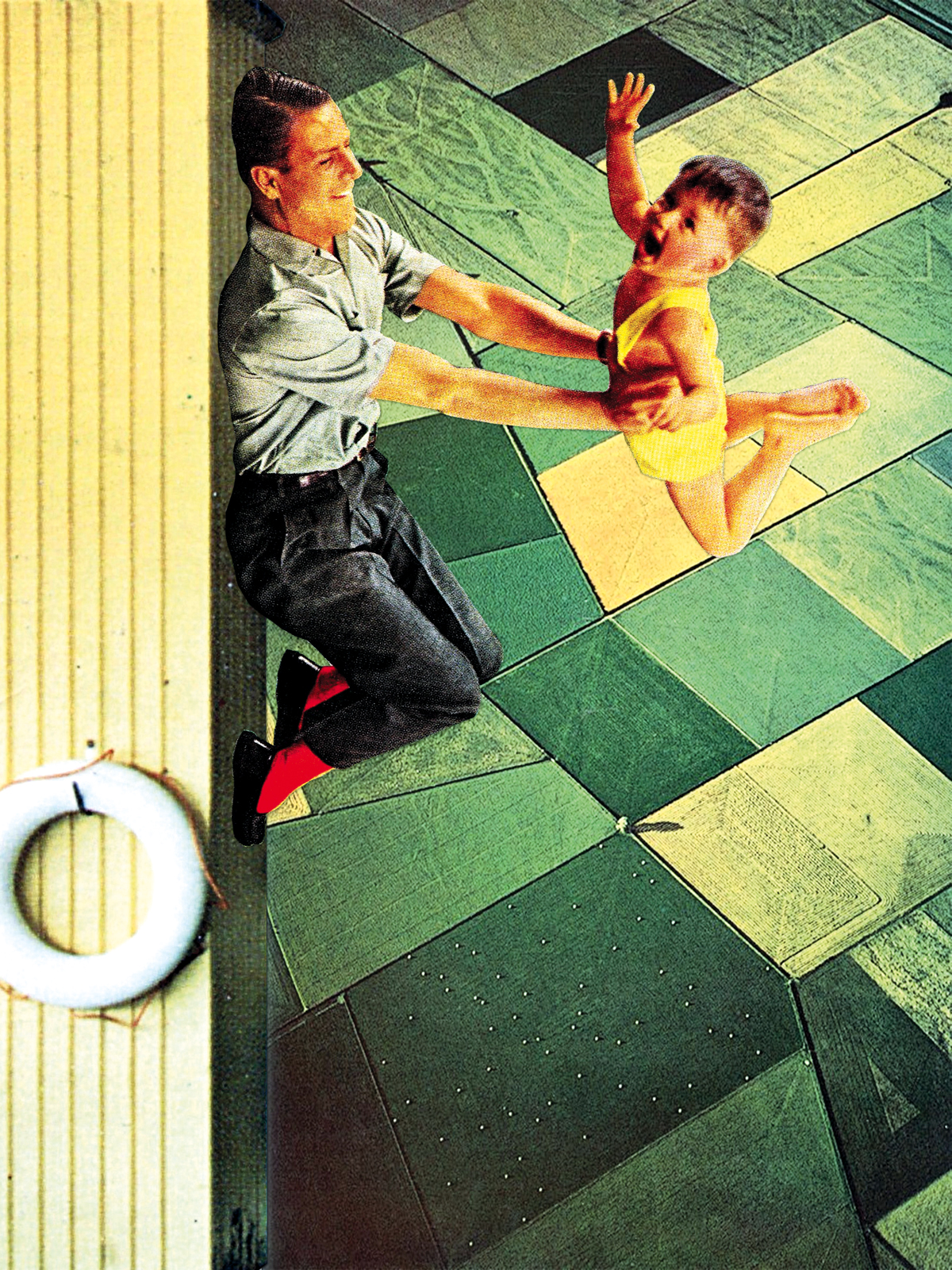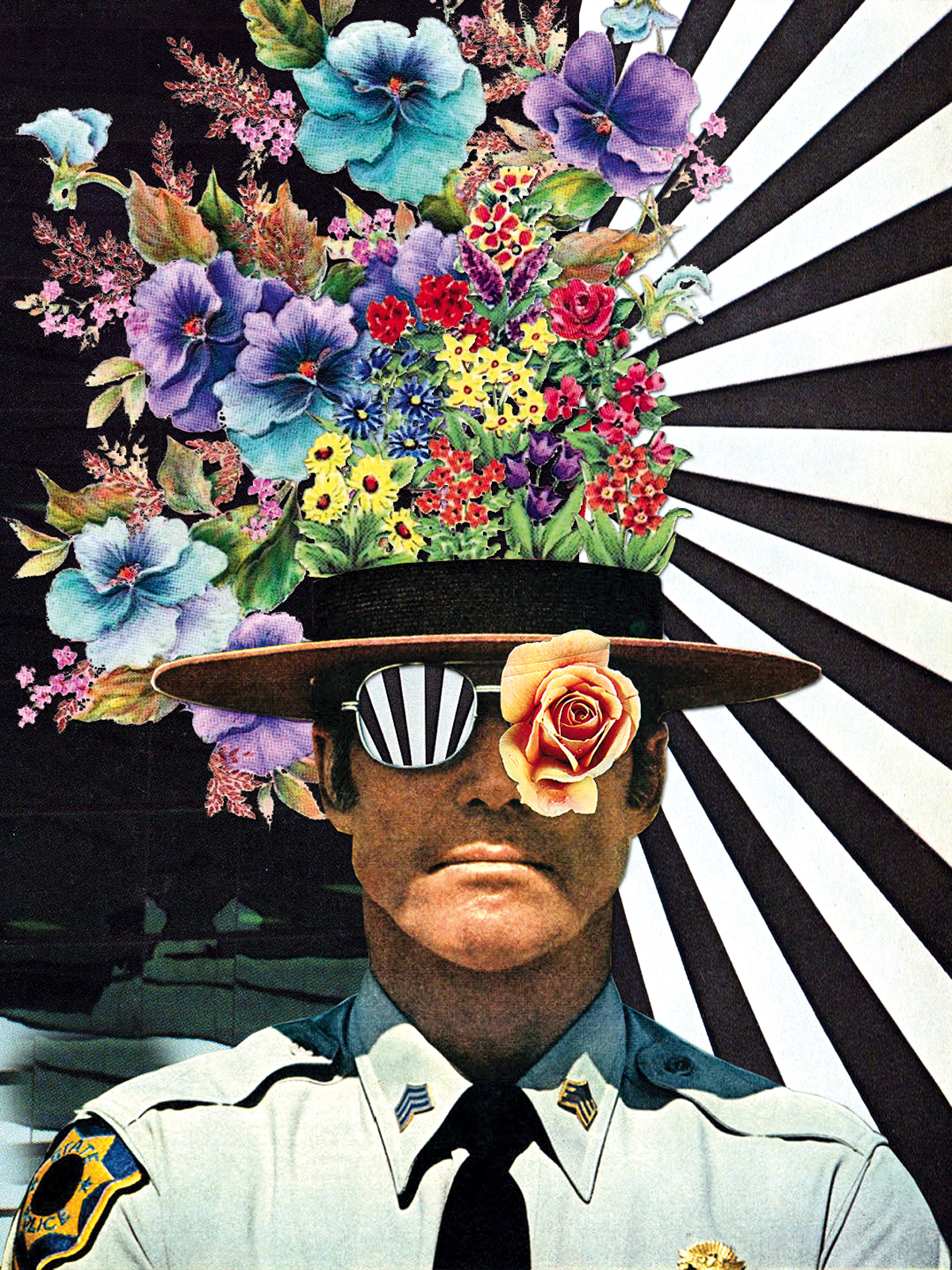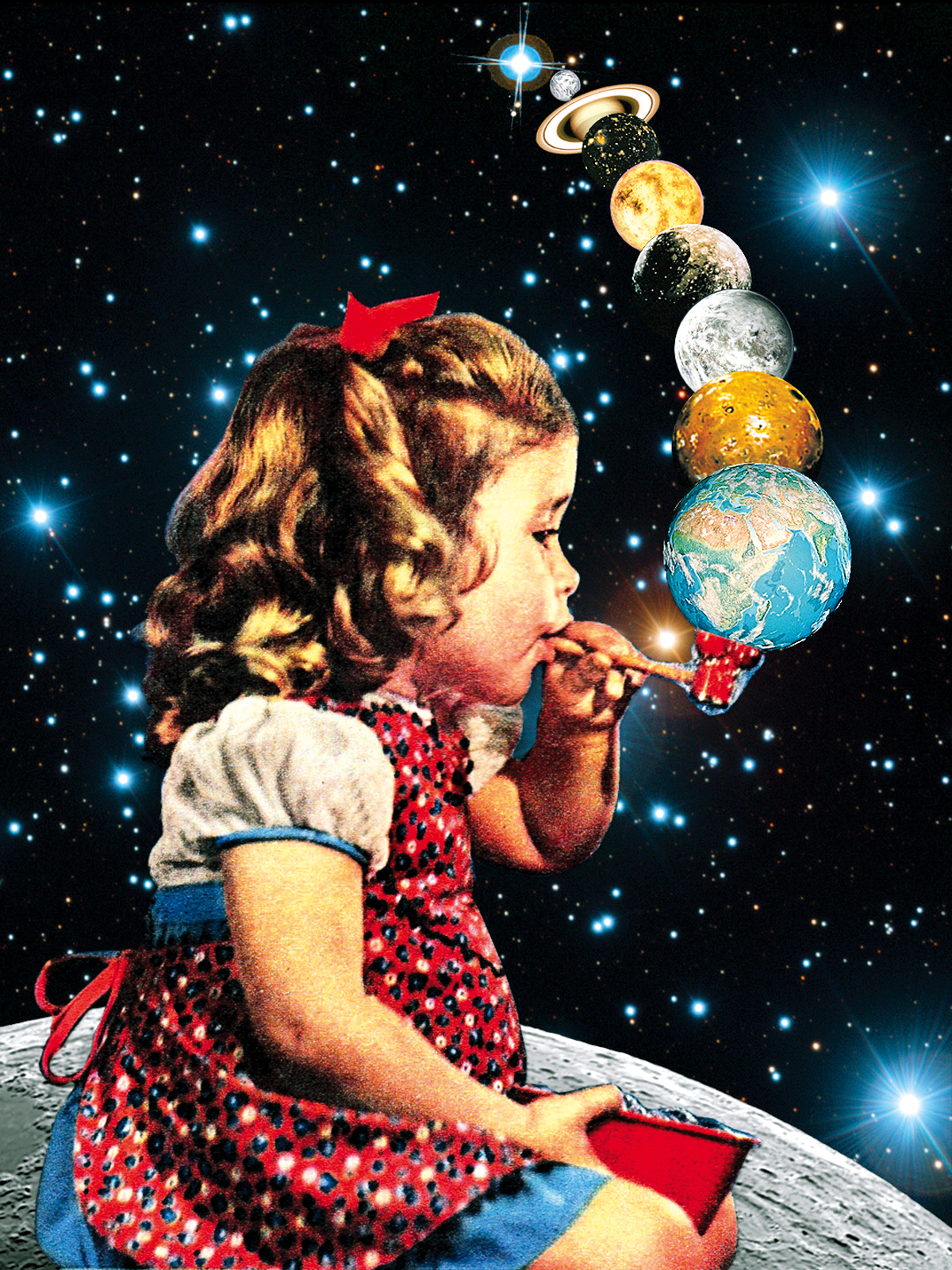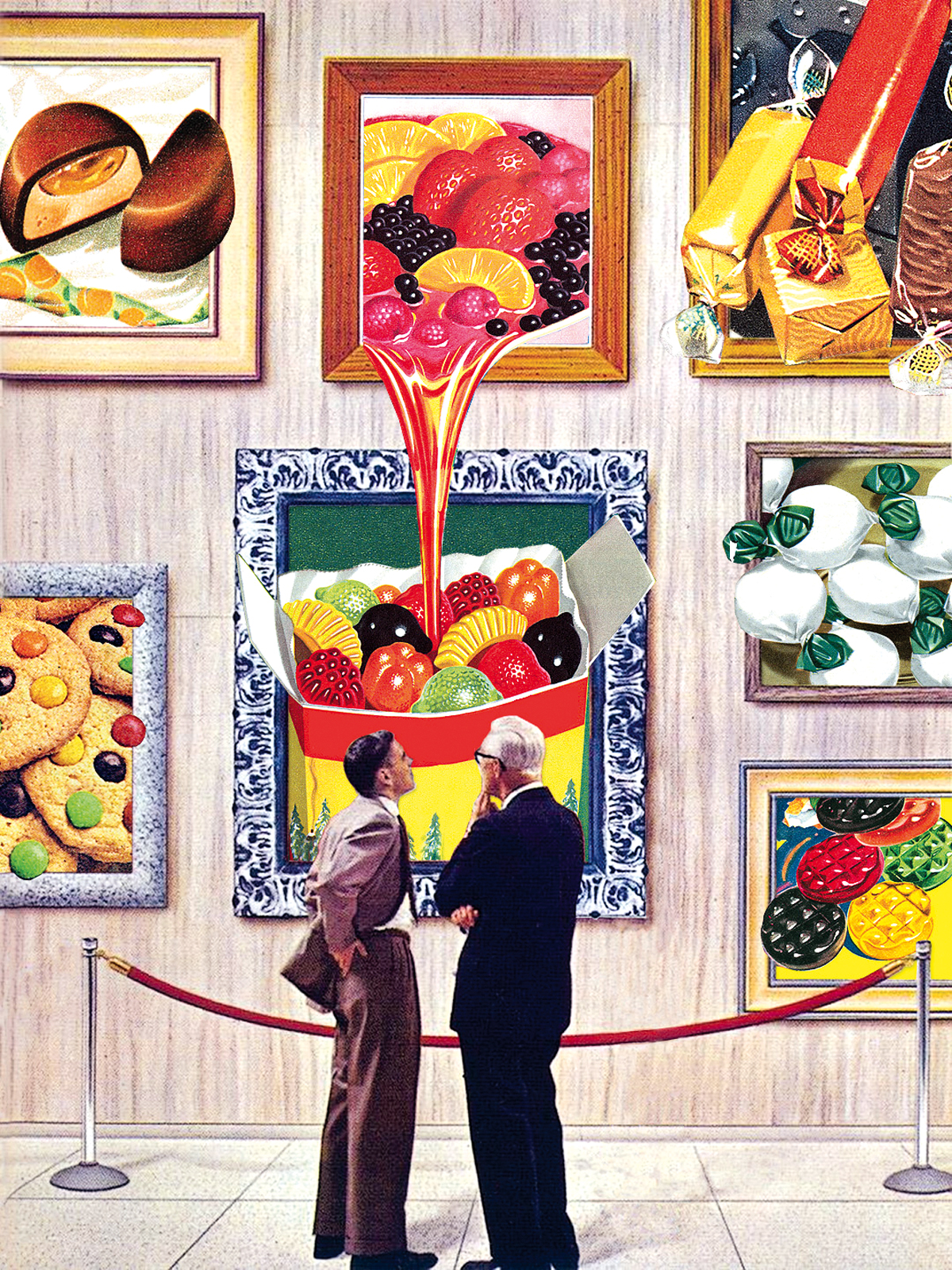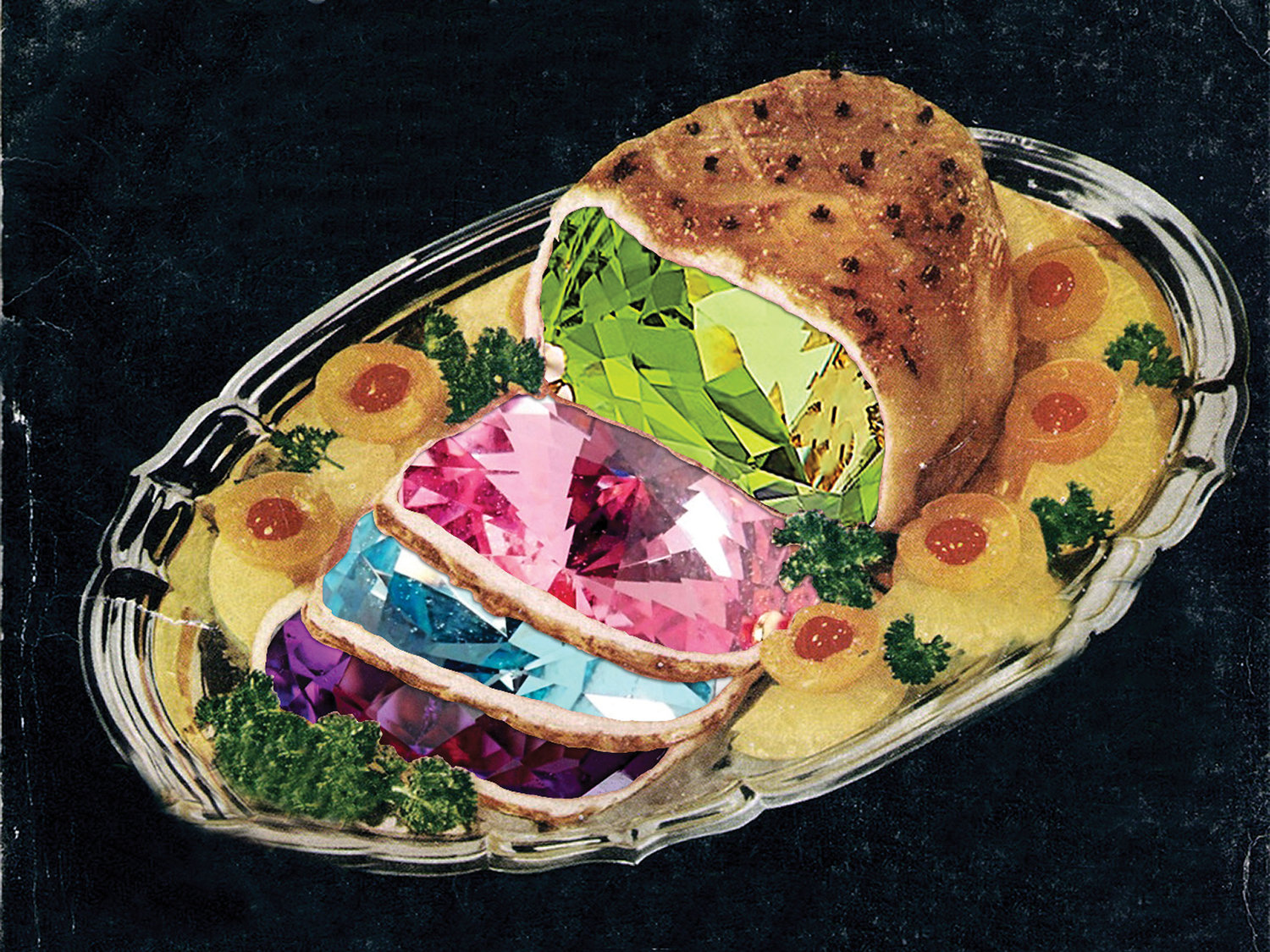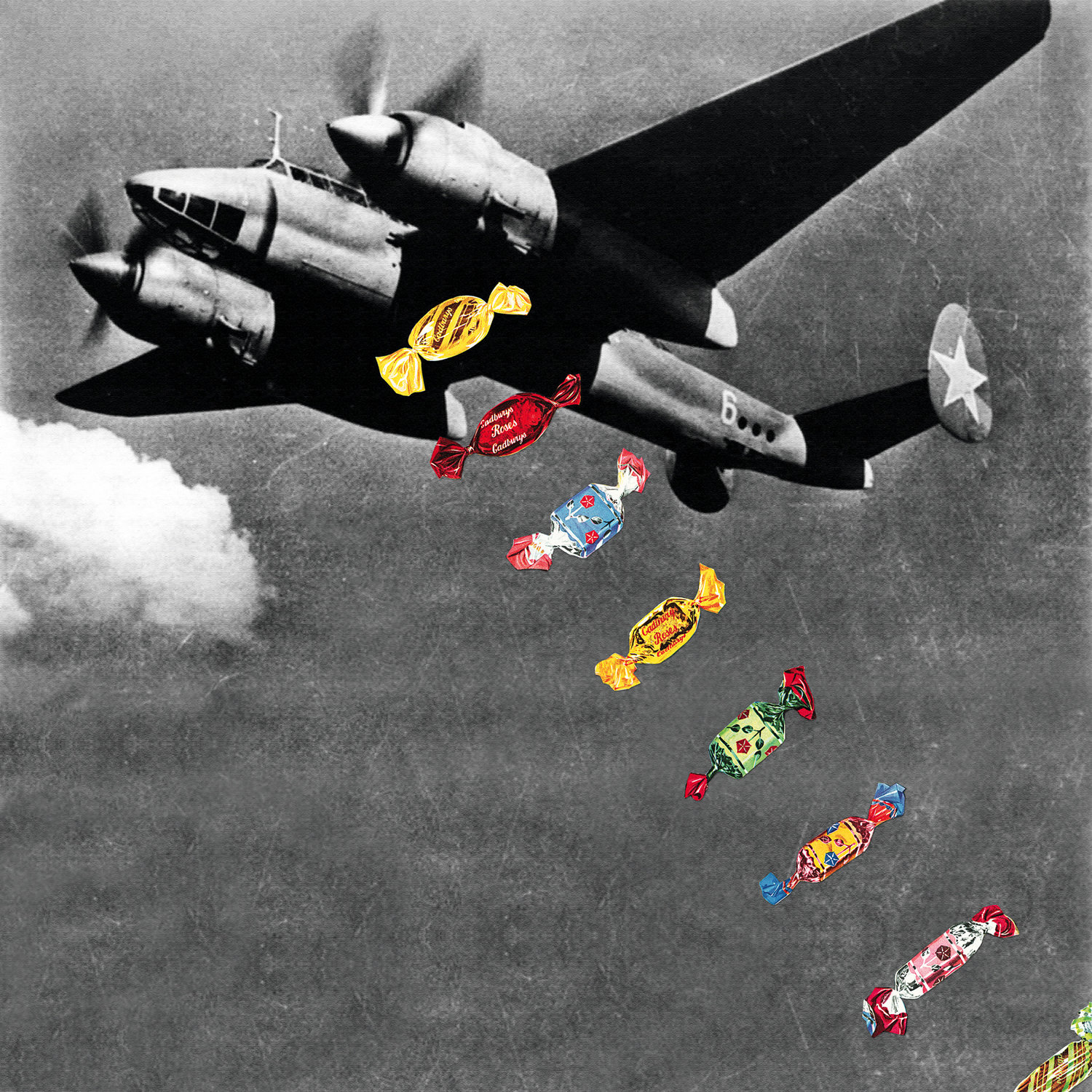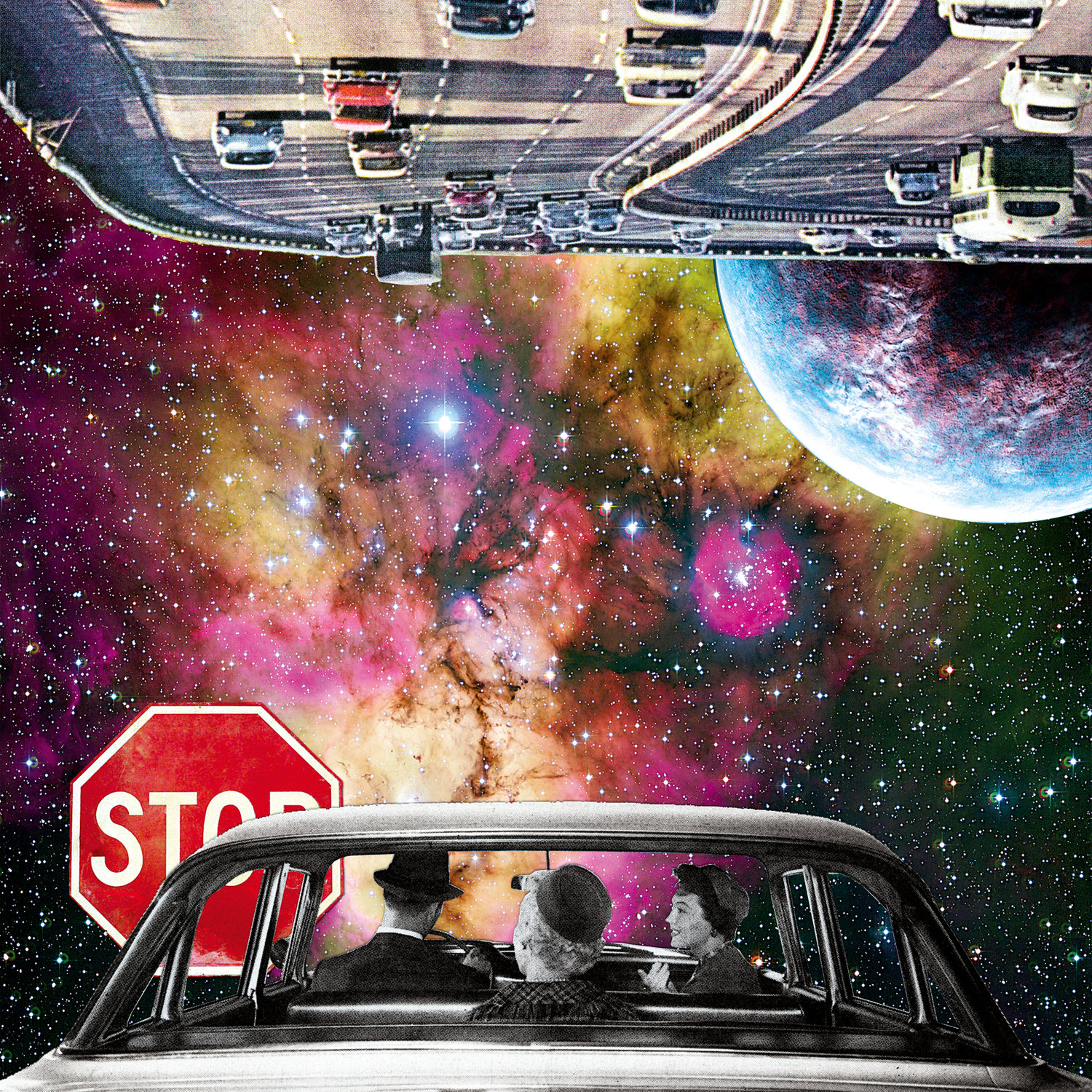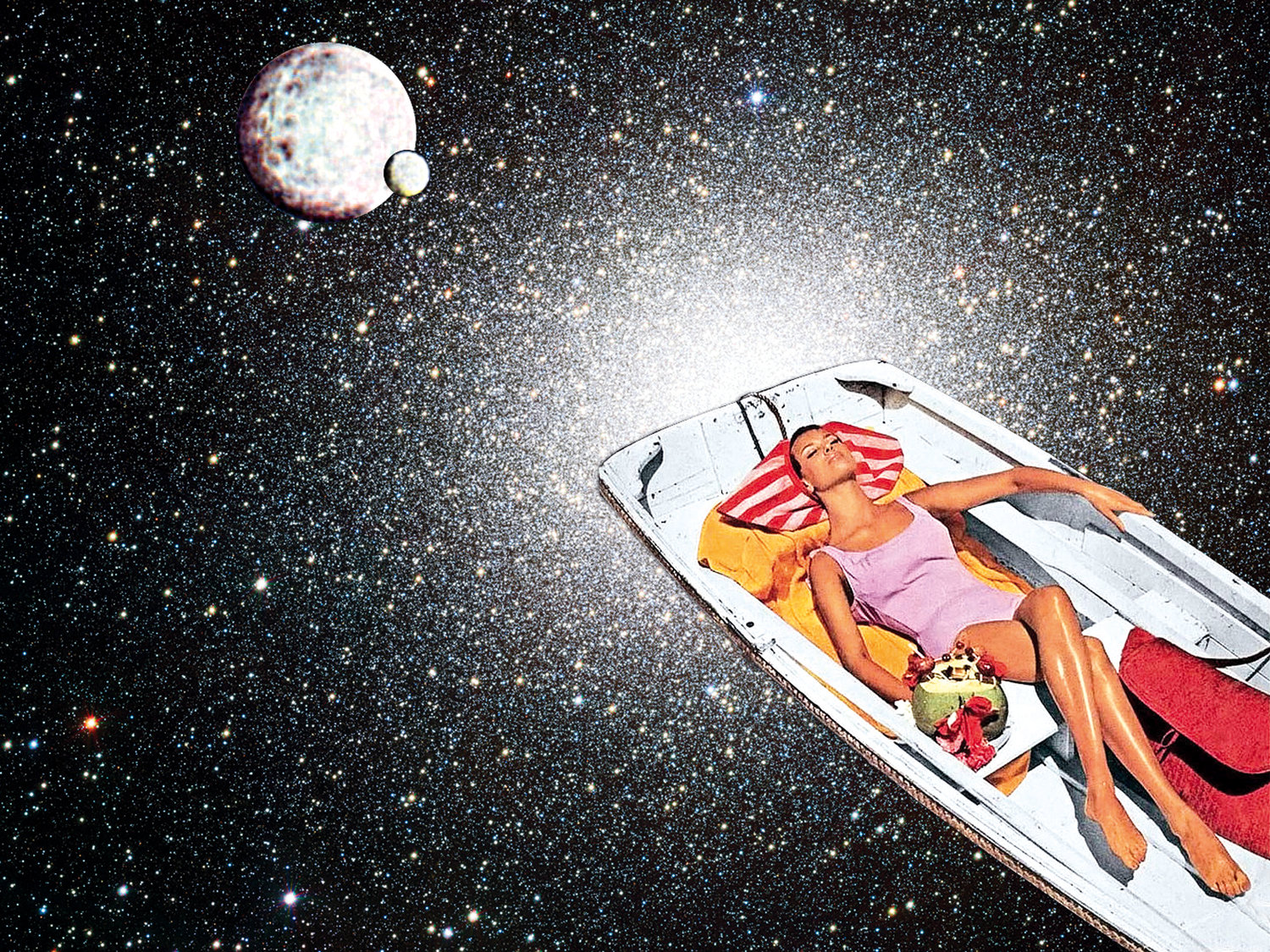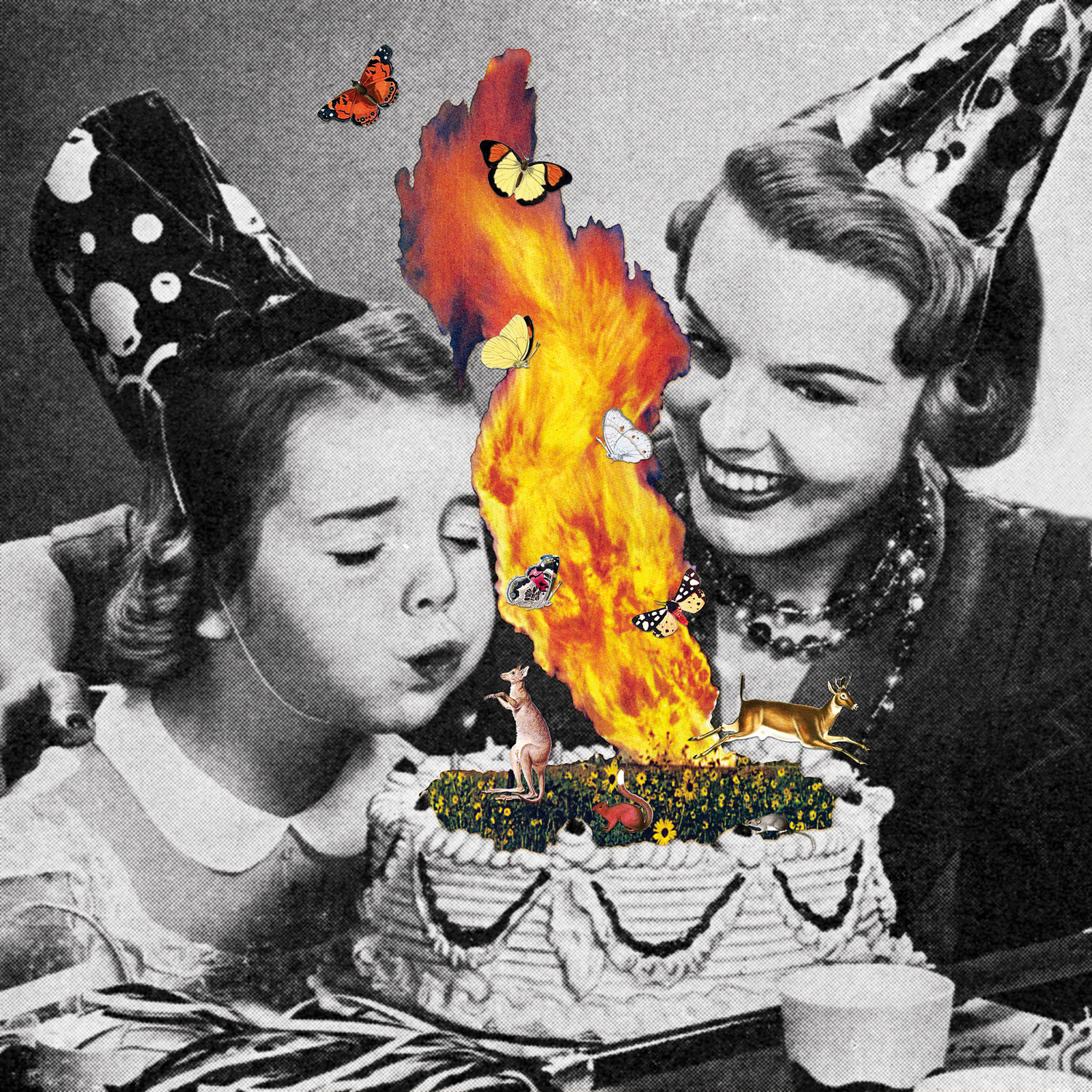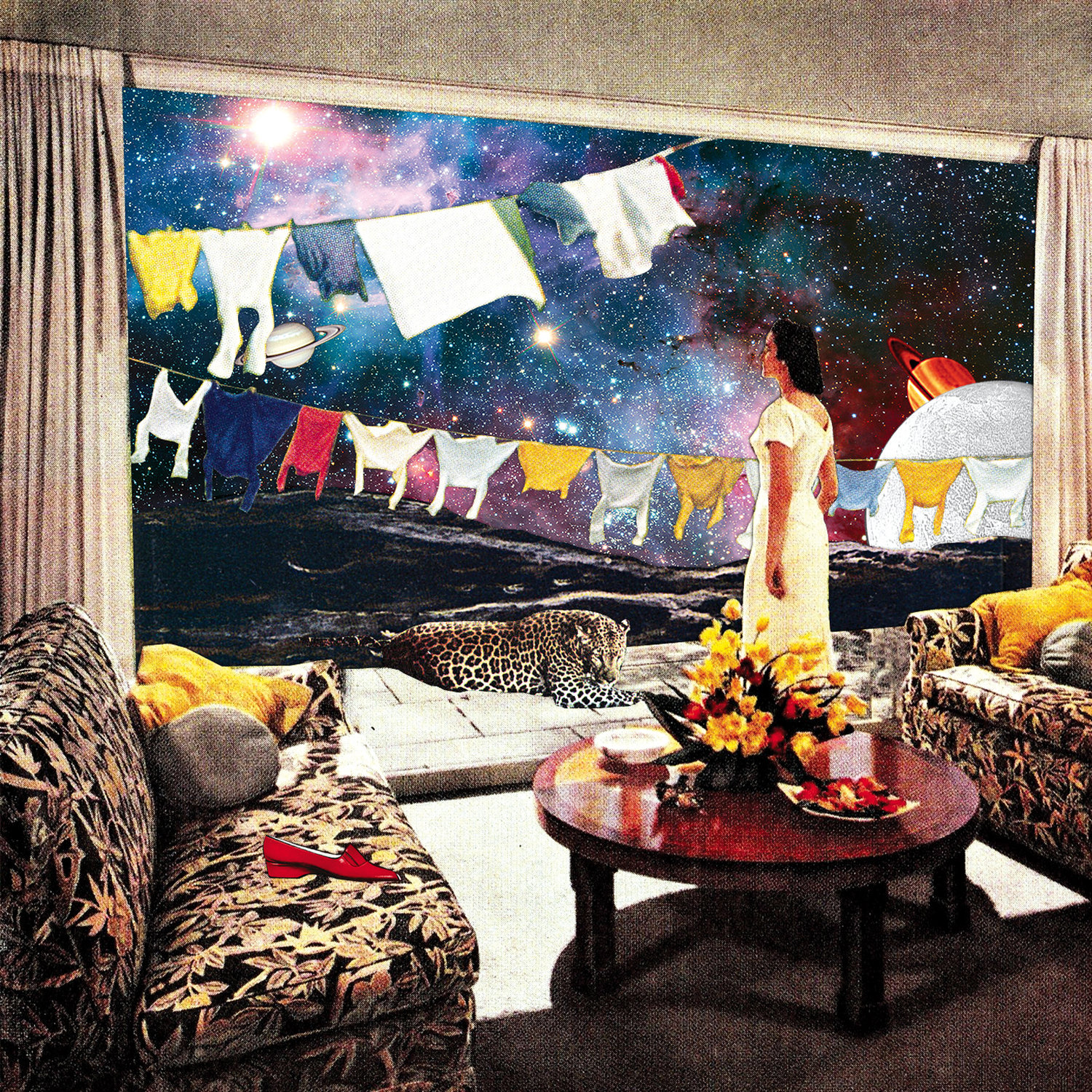EUGENIA LOLI - QUEEN OF POP COLLAGE REVIVAL
Queen of Pop Collage Revival
As paper, glue and scissors made way for cut and paste digital tools, collage art has made a striking comeback in recent years. California-based Eugenia Loli is one of the genre’s most successful representatives, PLASTIK* interviewed THE QUEEN OF COLLAGES to ask her about her work, the revival of collage art and much more.
“Collage is the ultimate remix visual art. And I believe that we live in the age of remix. Naturally, creativity flows through that medium, and it’s rather easy to get started with it, so it becomes very fun, very soon.”
Eugenia, on your website you explain that, having worked on an animated music video, you got hooked on collaging. What’s the fun and beauty of that?
Collage is the ultimate remix visual art. And I believe that we live in the age of remix. Naturally, creativity flows through that medium, and it's rather easy to get started with it, so it becomes very fun, very soon.
How would you define “modern vintage collage art,” and what makes a good collage?
Modern vintage collage started around 2010-2011. Before that, the main collage style was dada, which was a less approachable one. The new style is less abstract and very exotic in its explorations (e.g. surreal visuals of galaxies), is considered very fresh. People on Tumblr seem to have been hooked overnight back then. I'd say that the style was in full force in 2012-2013, but I have seen a decline in interest in 2014 (at least via Tumblr). This is not unexpected though, since most art styles in the modern times don't live more than a few short years.
On your site, you also call yourself a “major geek.” How does the inner geek in you express itself?
Some of my older collages were about androids, robots, and about tech-related subjects, like online privacy. I have mellowed down that aspect in my newer collages though.
You also say you (often) want to “say” something with your work. Now, your work is full of visual metaphors and too varied to reduce to a simple “message,” but I seem to detect in many of them a longing for a 'higher' or 'better' state of being. Does that ring a bell?
Yes. A lot of my artworks explore a very tangible theme and idea, very few don't. The various elements are there for a reason, and the viewer is welcome to interpret them with the help of the artwork's title. My deepest work to date is "Three Minutes to Nirvana", which is about the human race achieving a higher state of being. Every element in the collage had its purpose and meaning.
Your image the “Droplet that Returned to the Ocean” reminds me of Magritte. And your work in general is quite surreal. What is “surrealism” to you?
That specific collage was made a few days after my grandpa died recently. It was a homage to him. But you're right that it has a Magritte feel, since Magritte is definitely an influence. I have three
other artworks that are very Magritte-ish. I also have one inspired by Dali, one by Picasso, and three by Andy Warhol. At heart, I'm a surrealist, for sure. Surrealism for me represents the art turn of the human collective from concrete ideas to more abstract ones. Surrealism shows glimpses of what can be possible for us as a species.
You mention British artist Kieron “Cur3es” Cropper as a major influence. I looked him up and he has indeed some stunning work. What makes him, in your words, such a “genius”?
Cur3es is able to play with geometry better than any of the rest of us. He sees patterns between elements in a different way, and so he's able to construct images that normally wouldn't make sense, but the final result works perfectly together. On the contrary, I'm very calculating in the way I use my elements, and I usually have other elements counter-balancing my main elements visually. Cur3es has a more free/abstract approach than I do, which is more liberating artistically, and more progressive.
“I believe that art loses its value when it becomes fully commercial, because the artist then tries to please the latest visual fashion or the wishes of his customers.”
In October there happens to be a major exhibition of Matisse’s cut-outs at MoMa. Could he be considered a “founding father” of collage art?
Honestly, no. Matisse is great, but he used paper only when he couldn't use paint anymore. While technically it's collage just because of the use of paper, it is not what I consider "remix collage," which is the main type used today. Remix collage truly started with Picasso and Georges Braque, and came into further fruition a bit later with Max Ernst. I consider Karel Teige to be the best (or at least, the most progressive) collage artist among the old ones. But speaking for modern collage and my own generation, which is the "pop" collage that is currently very successful and in its golden age, that wave just started in 2010.
The Internet has been a blessing in many ways. Yet, earning money, especially for artists, musicians and writers, often remains problematic. You seem to have found a very interesting formula: offering your work both for free and for a relatively small amount of money in your web store. In short, how does that work? And does it work?
Offering my work for free (under the Creative Commons CC-BY-NC and CC-BY licenses) has not hindered my ability to sell my work. People still prefer to buy a print than to print it themselves on their own printer by downloading the offered high-res file. I sell a few pieces a month, but commissions is where most money comes from. And even with that, I'm not able to pay the rent in full. I can't complain though. I consider my husband to also be my patron, since he's providing for the rest!
On a lighter note, if you could have any three art works in the world to adorn your home, which ones would that be?
Heh, that's easy, since I've already made that list, last year! You can find my top 10 on my Tumblr page. My top three on that list are Cur3es’ Shards, Caroline Alkire’s Untitled and David Delruelle’s Seasick. And as it turns out, earlier this year I got 2 of the 3 artworks in my top 3. So I'm getting there!
And, finally, how does a perfect Sunday look like for Eugenia Loli?
Breakfast in bed, snuggle with husband under the covers until lunch time. Then go out to eat. Walk in a park or visit places. Come back home, have dinner, and watch a movie until bed time.
INTERVIEWED BY PETER SPEETJENS

